Heptane, 1,1'-oxybis-
Modify Date: 2025-08-25 19:31:48

Heptane, 1,1'-oxybis- structure
|
Common Name | Heptane, 1,1'-oxybis- | ||
|---|---|---|---|---|
| CAS Number | 629-64-1 | Molecular Weight | 214.38700 | |
| Density | 0.8 | Boiling Point | 262ºC | |
| Molecular Formula | C14H30O | Melting Point | N/A | |
| MSDS | N/A | Flash Point | 96.2ºC | |
| Name | 1-heptoxyheptane |
|---|---|
| Synonym | More Synonyms |
| Density | 0.8 |
|---|---|
| Boiling Point | 262ºC |
| Molecular Formula | C14H30O |
| Molecular Weight | 214.38700 |
| Flash Point | 96.2ºC |
| Exact Mass | 214.23000 |
| PSA | 9.23000 |
| LogP | 4.94380 |
| Index of Refraction | 1.429 |
|
Heptyl Ether
Revision number: 5
SAFETY DATA SHEET Section1. IDENTIFICATION Product name:Heptyl Ether Revision number:5 Section2. HAZARDS IDENTIFICATION GHS classification PHYSICAL HAZARDSNot classified Not classified HEALTH HAZARDS ENVIRONMENTAL HAZARDSNot classified GHS label elements, including precautionary statements Pictograms or hazard symbolsNone No signal word Signal word Hazard statementsNone None Precautionary statements: Section3. COMPOSITION/INFORMATION ON INGREDIENTS Substance/mixture:Substance Components:Heptyl Ether Percent:>98.0%(GC) CAS Number:629-64-1 Synonyms:Diheptyl Ether Chemical Formula:C14H30O Section4. FIRST AID MEASURES Inhalation:Remove victim to fresh air and keep at rest in a position comfortable for breathing. Get medical advice/attention if you feel unwell. Skin contact:Remove/Take off immediately all contaminated clothing. Rinse skin with water/shower. If skin irritation or rash occurs: Get medical advice/attention. Eye contact:Rinse cautiously with water for several minutes. Remove contact lenses, if present and easy to do. Continue rinsing. If eye irritation persists: Get medical advice/attention. Ingestion:Get medical advice/attention if you feel unwell. Rinse mouth. Protection of first-aiders:A rescuer should wear personal protective equipment, such as rubber gloves and air- tight goggles. Section5. FIRE-FIGHTING MEASURES Suitable extinguishingDry chemical, foam, carbon dioxide. media: Unsuitable extinguishing Water (It may scatter and spread fire.) media: Heptyl Ether Section5. FIRE-FIGHTING MEASURES Precautions for firefighters: Fire-extinguishing work is done from the windward and the suitable fire-extinguishing method according to the surrounding situation is used. Uninvolved persons should evacuate to a safe place. In case of fire in the surroundings: Remove movable containers if safe to do so. Special protectiveWhen extinguishing fire, be sure to wear personal protective equipment. equipment for firefighters: Section6. ACCIDENTAL RELEASE MEASURES Use personal protective equipment. Keep people away from and upwind of spill/leak. Personal precautions, protective equipment and Ensure adequate ventilation. Entry to non-involved personnel should be controlled emergency procedures: around the leakage area by roping off, etc. Environmental precautions: Prevent product from entering drains. Methods and materials for Absorb spilled material in a suitable absorbent (e.g. rag, dry sand, earth, saw-dust). containment and cleaning In case of large amount of spillage, contain a spill by bunding. Adhered or collected up: material should be promptly disposed of, in accordance with appropriate laws and regulations. Section7. HANDLING AND STORAGE Precautions for safe handling Technical measures:Handling is performed in a well ventilated place. Wear suitable protective equipment. Prevent generation of vapour or mist. Wash hands and face thoroughly after handling. Use a ventilation, local exhaust if vapour or aerosol will be generated. Advice on safe handling: Avoid contact with skin, eyes and clothing. Conditions for safe storage, including any incompatibilities Storage conditions:Keep container tightly closed. Store in a cool and dark place. Store away from incompatible materials such as oxidizing agents. Packaging material:Comply with laws. Section8. EXPOSURE CONTROLS / PERSONAL PROTECTION Install a closed system or local exhaust as possible so that workers should not be Engineering controls: exposed directly. Also install safety shower and eye bath. Personal protective equipment Respiratory protection: Vapor respirator. Follow local and national regulations. Hand protection:Protective gloves. Eye protection:Safety glasses. A face-shield, if the situation requires. Skin and body protection: Protective clothing. Protective boots, if the situation requires. Section9. PHYSICAL AND CHEMICAL PROPERTIES Physical state (20°C):Liquid Form:Clear Colorless - Almost colorless Colour: Odour:No data available pH: No data available Melting point/freezing point:No data available 262°C Boiling point/range: Flash point:No data available Flammability or explosive limits: No data available Lower: Upper:No data available 0.80 Relative density: Solubility(ies): No data available [Water] [Other solvents]No data available Heptyl Ether Section10. STABILITY AND REACTIVITY Chemical stability:Stable under proper conditions. Possibility of hazardous No special reactivity has been reported. reactions: Incompatible materials: Oxidizing agents Hazardous decomposition Carbon monoxide, Carbon dioxide products: Section11. TOXICOLOGICAL INFORMATION Acute Toxicity:ivn-mus LD50:470 mg/kg Skin corrosion/irritation: No data available Serious eyeNo data available damage/irritation: Germ cell mutagenicity: No data available Carcinogenicity: IARC =No data available No data available NTP = Reproductive toxicity:No data available MK1390500 RTECS Number: Section12. ECOLOGICAL INFORMATION Ecotoxicity: Fish:No data available Crustacea:No data available Algae:No data available Persistence / degradability: No data available BioaccumulativeNo data available potential(BCF): Mobility in soil Log Pow:No data available Soil adsorption (Koc):No data available Henry's LawNo data available constant(PaM3/mol): Section13. DISPOSAL CONSIDERATIONS Recycle to process, if possible. Consult your local regional authorities. You may be able to burn in a chemical incinerator equipped with an afterburner and scrubber system. Observe all federal, state and local regulations when disposing of the substance. Section14. TRANSPORT INFORMATION Hazards Class:Does not correspond to the classification standard of the United Nations UN-No:Not listed Section15. REGULATORY INFORMATION Safe management ordinance of dangerous chemical product (State Council announces on January 26, 2002 and revised on February 16,2011): Safe use and production, the storage of a dangerous chemical, transport, loading and unloading were prescribed. Heptyl Ether SECTION 16 - ADDITIONAL INFORMATION N/A |
CHEMICAL IDENTIFICATION
HEALTH HAZARD DATAACUTE TOXICITY DATA
|
| RTECS | MK1390500 |
|---|
| Precursor 10 | |
|---|---|
| DownStream 7 | |
| Di-n-heptyl-aether |
| n-diheptyl ether |
| 1,1'-Oxybisheptane |
| HEPTYL ETHER |
| di-1-heptyl ether |
| Heptane,1,1'-oxybis |
| Ether,di-n-heptyl |
| EINECS 211-100-0 |
| heptyloxyheptane |
| Di-n-heptyl ether |
| n-heptyl ether |
| Diheptyl-aether |
| Ether,diheptyl |
| Diheptyl ether |
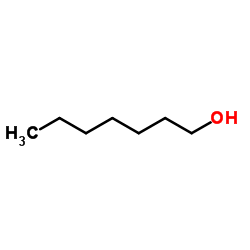 CAS#:111-70-6
CAS#:111-70-6 CAS#:111-71-7
CAS#:111-71-7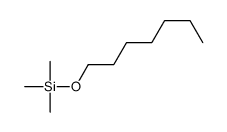 CAS#:18132-93-9
CAS#:18132-93-9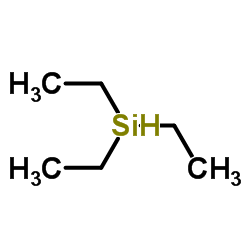 CAS#:617-86-7
CAS#:617-86-7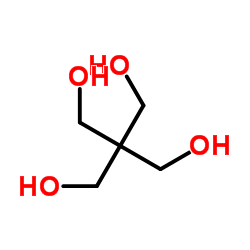 CAS#:115-77-5
CAS#:115-77-5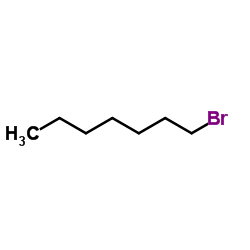 CAS#:629-04-9
CAS#:629-04-9 CAS#:67-56-1
CAS#:67-56-1 CAS#:4282-40-0
CAS#:4282-40-0 CAS#:143-08-8
CAS#:143-08-8 CAS#:111-25-1
CAS#:111-25-1 CAS#:111-14-8
CAS#:111-14-8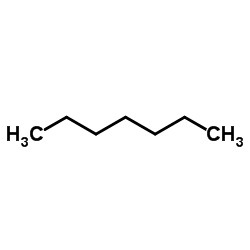 CAS#:142-82-5
CAS#:142-82-5 CAS#:624-09-9
CAS#:624-09-9 CAS#:5454-28-4
CAS#:5454-28-4 CAS#:7155-12-6
CAS#:7155-12-6